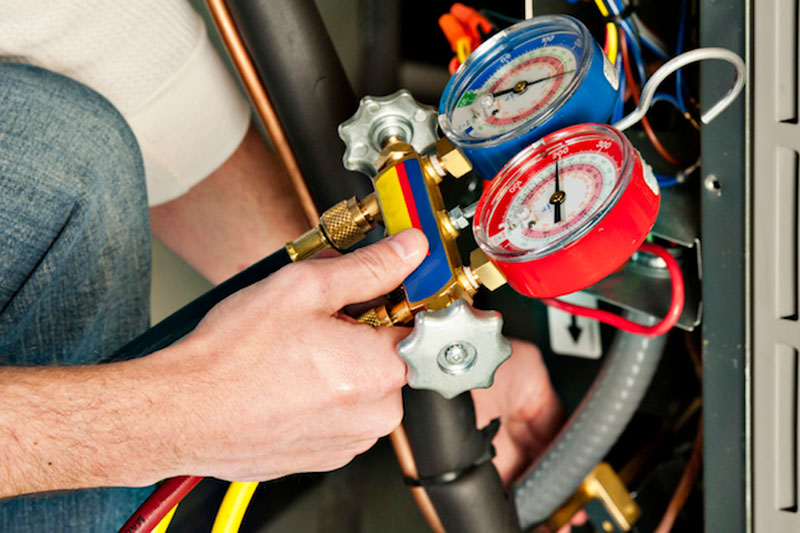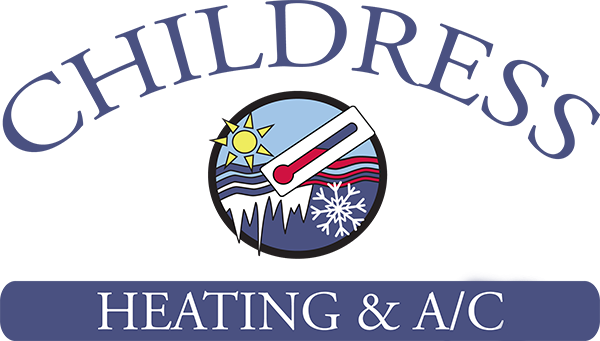
You might not think a lot about how your air conditioner functions, but it relies on refrigerant to keep your house cool. This refrigerant is controlled by environmental laws, as it contains chemicals.
Based on when your air conditioner was put in, it may need R-22, R-410A or R-32 refrigerant. We’ll go over the differences and which air conditioner refrigerants are being phased out in Fredericksburg, as well as how these phaseouts impact you.
What’s R-22 and Why Is It Discontinued?
If your air conditioner was added before 2010, it probably contains Freon®. You can find out if your air conditioner contains it by contacting us at 540-675-4306. You can also examine the name plate on your air conditioner condenser, which is found outside your home. This sticker will contain information on what type of refrigerant your AC needs.
Freon, which is also called R-22, contains chlorine. Scientists consider R-22 to be damaging to the earth’s ozone layer and one that results in global warming. The Environmental Protection Agency, which governs refrigerants in the United States, barred its production and import in January 2020.
I Use an Air Conditioner with R-22. Do I Need to Get a New One?
It depends. If your air conditioning is cooling as designed, you can continue to run it. With yearly air conditioner maintenance, you can expect your AC to operate around 15–20 years. However, the Department of Energy notes that substituting a 10-year-old air conditioner could save you 20–40% on summertime cooling costs!
If you don’t install a new air conditioner, it might lead to an issue if you need air conditioning repair later on, specifically for refrigerant. Repairs could be more expensive, as only reduced levels of recycled and reclaimed R-22 is available.
With the discontinuation of R-22, many new air conditioners now use Puron®. Also known as R-410A, this refrigerant was made to keep the ozone layer strong. As it calls for a different pressure level, it doesn’t match air conditioners that need R-22 for cooling.
However, Puron still has the possibility to lead to global warming. As a consequence, it might also ultimately be phased out. Although it hasn’t been mandated yet for residential air conditioners, it’s anticipated sometime this decade.
What Refrigerant Will Replace R-410A?
In preparation of the discontinuation, some companies have started using R-32 in new air conditioners. This refrigerant is classified low for global warming potential—approximately one-third less than R-410A. And it also reduces energy use by about 10%, according to the Intergovernmental Panel on Climate Change’s Fourth Assessment Report. That’s savings that might be passed on to you through your utility bills.
Childress Heating & AC Can Help with All Your Air Conditioning Needs
In brief, the modifications to air conditioner refrigerant probably won’t affect you very much until you require repairs. But as we talked about earlier, repairs connected to refrigerant may be pricier since there are the low amounts available.
In addition to that, your air conditioner typically malfunctions at the worst time, often on the warmest day when we’re experiencing a lot of other appointments for AC repair.
If your air conditioner requires a phased out refrigerant or is aging, we advise getting a modern, energy-efficient air conditioner. This provides a hassle-free summer and might even lower your utility costs, especially if you get an ENERGY STAR®-rated system. Plus, Childress Heating & AC has many financing programs to make your new air conditioner even more affordable. Contact us at 540-675-4306 to get started now with a free estimate.
